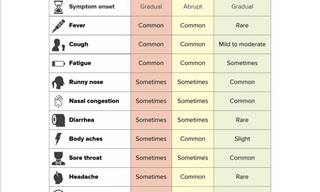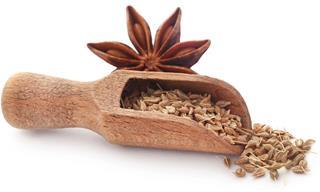If 2020 was a normal year, the annual flu season would be our biggest concern for the winter, at least as far as infectious diseases go. This year, however, the biggest question on the minds of experts and the general public was, of course, how the Covid-19 pandemic is going to affect and interact with the flu. Usually, by mid-November, the flu season is already felt more substantially around the Northern Hemisphere, but this year we have only seen scattered influenza outbreaks. This is probably thanks to the social distancing measures many are taking to fight Covid-19.

While this is a positive outcome, experts are warning that we are definitely not out of the woods yet. The flu season usually doesn't peak until February, which means there is still plenty of time for it to gain momentum. What’s even more alarming is the fact that it is possible to contact both infections at the same time.
Already, a handful of people in the US, UK, and China have reported co-infections of the coronavirus and influenza. Though data on how the viruses interact with each other is currently limited, this is what we know at the moment about how co-infections happen, what the outcomes are, and what protective measures can be taken.
Contracting both viruses simultaneously: how does it happen?
What makes a coronavirus and influenza co-infection possible is that the two viruses bind to different parts of the body. This means they aren’t competing with each other when it comes to infecting our cells.
According to Dean Winslow, an infectious disease specialist with Stanford Health Care, some evidence on influenza co-infection suggests that there is a short window of time in which one viral infection could inhibit a second infection from successfully fusing with our cells. That window, however, is “very short and unpredictable”, as Winslow told Huffington Post. It also isn’t clear if that protection exists only between influenza strains or if it holds up with other viruses like the coronavirus.

When the body identifies an intruder in the form of a pathogen, the immune system produces both a general and a specific response to fight off the infection. In theory, the general response may be able to ward off other viruses, too, to some degree. Unfortunately, for some people, that general immune system response may not be enough. The more targeted response, aimed specifically at each distinct virus, won’t be effective at fighting other pathogens.
"What the immune system throws at one virus doesn’t work on the other, so it has to figure out how to do both. It’s very taxing for the immune system to be fighting off two aggressive and severe respiratory illnesses at the same time,” explained internist Matthew Heinz.
The outcomes of coronavirus-influenza co-infection
Doctors who have treated patients suffering from co-infection of influenza and other common coronaviruses don’t have very positive prospects. Early data suggests the same is true for Covid-19. All strains of influenza and SARS-CoV-2 harm the body in similar ways - both cause decreased blood oxygen levels, respiratory issues, and inflammation. So naturally, having these two infections could potentially make the inflammatory response even worse.
A recent study found that those co-infected faced a doubled mortality risk compared with patients infected solely with Covid-19. They were also more likely to be admitted to the intensive care unit and require a ventilator. Similar research from China confirmed those findings.
The most susceptible groups overlap between both illnesses - those include older adults and people with underlying health conditions like obesity, cancer, and lung disease. The risk is expected to be greater for such individuals.
What protective measures are available?
The best way to minimize the risk, according to experts, is to get tested for both the flu and Covid-19. These infections are easy to mistake for one another or misdiagnose, but as the treatments for Covid-10 and influenza are very different, being diagnosed and treated correctly is key. To learn more about how you can differentiate between Covid-19 and flu symptoms take a look at our previous article Covid-19 or the Flu: How to Tell the Difference.
Doctors are still gathering data on co-infections. As the colder season progresses, we will have a clearer picture of how co-infections play out on different people, and possibly more precise methods for treatment and prevention. Until then, experts are stressing the importance of continuing to practice all the recommended pandemic safety precautions. Wearing a mask in public, socially distancing, and washing your hands often is your best bet at preventing both illnesses, and having a safe winter and holiday season.
Share this information with friends and family
 Go to BabaMail
Go to BabaMail

























































